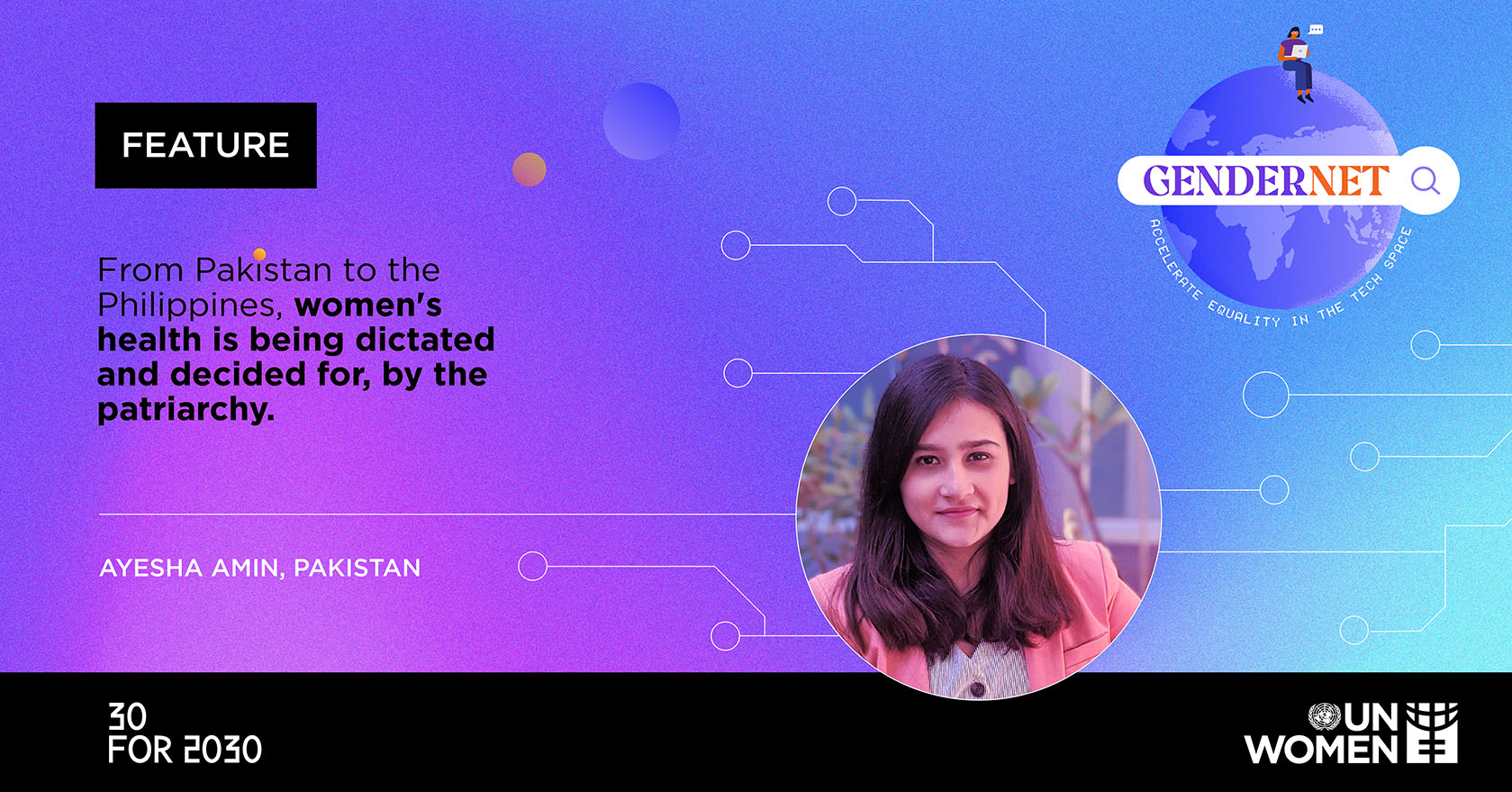This article is part of the GenderNet Campaign, supported by the Changemakers Project: Youth, Technology and Innovation to End Violence Against Women and Girls in Asia and the Pacific (2021-2023) with the generous fund from the Government of the Republic of Korea, through the Ministry of Gender Equality and Family.
Time to femtech it up!
Date:
Author: Ayesha Amin, 30 for 2030 Network Member

I first met Mahanoor, 16, in southern Pakistan when we visited her small village for our menstrual health drive in 2019. She asked me in-depth questions about polycystic ovary syndrome (PCOs); her knowledge was excellent, and I was impressed because not many women in Pakistan know about this issue.
When Mahanoor got her first period at 14, she had to drop out of school because of cultural beliefs in her community, outside the small town of Petaro. The emotional and physical changes in her body, and the overnight change from being treated as a child to her family’s expectation of behaving like an adult, made her curious to learn more about periods. While she did not own a phone, she used her friends to watch TikTok videos in Urdu on menstrual health. I was amazed to see how she was using technology and her interests to get access to information that is usually kept away from girls and women. This is where my interest in exploring how technology can be localized and made inclusive to empower girls and women in rural communities for their health began.
That same year, I heard the word ‘femtech’ in a workshop, and my memory of the conversation with Mahanoor sparked my interest to delve deeper into it. Coined only in 2016, the word ‘femtech’ is used to define any technology-enabled product, service or solution focused on women’s health. With the failure of the mainstream, traditional health ecosystems to provide equal access to women to health services and information as men, femtech is filling in some of the gender gaps in the health sector by prioritizing underserved and under-researched issues related to women’s health such as menstruation, PCOs, menopause, postpartum depression, and fertility care.
Women’s health has been dictated to and decided for by the patriarchy. And whether it is the male bias in clinical trials that leads to exclusion and underrepresentation of women or the misinformed narrative of how every woman’s body feels during menstruation, the female perspective has been historically missing. With femtech the narrative is changing; women are taking full ownership of their own physical, mental, sexual and reproductive health needs and this can also be seen in the growing number of women entrepreneurs in femtech start-ups. According to McKinsey, over 70 per cent of femtech companies have at least one female founder, compared to 20 per cent in other types of new companies.
Over the past few years, the femtech industry has seen a phenomenal increase in the number of new initiatives. The global femtech industry is valued at over USD40 billion and is expected to reach an annual growth rate of more than 13 per cent by 2025. While the Asia-Pacific region currently has only 14 per cent of the global femtech market, analysts predict that the region will see the fastest growth in femtech solutions.
Would it not be wonderful to expand femtech’s access to girls and women in marginalized communities? The grassroots communities in South Asia have stronger traditional and patriarchal norms that limit women’s access to health information and services and have a deeper stigma surrounding their sexual and reproductive health. As the femtech industry grows, it is essential to make it inclusive and localize it to meet the needs for girls and women from socio-economically disadvantaged groups so more girls like Mahanoor have tools to make informed decisions for their health.
Despite the phenomenal success of the femtech industry, it remains highly underfunded. This is due to a number of reasons: the male-dominated venture-capitalist space; the unconscious bias towards female founders; the world’s lack of interest in women’s health; or a combination of all of these factors. Whatever the reason might be, there is a pressing need for increased funding in femtech because, without investments in innovation and technology, it is unlikely that we will ever be able to close the gender gap in the health sector.
Femtech has been playing a significant role in helping women access products and services for their health and wellbeing; and with more investments and inclusivity, it can change the future of women’s healthcare industry!